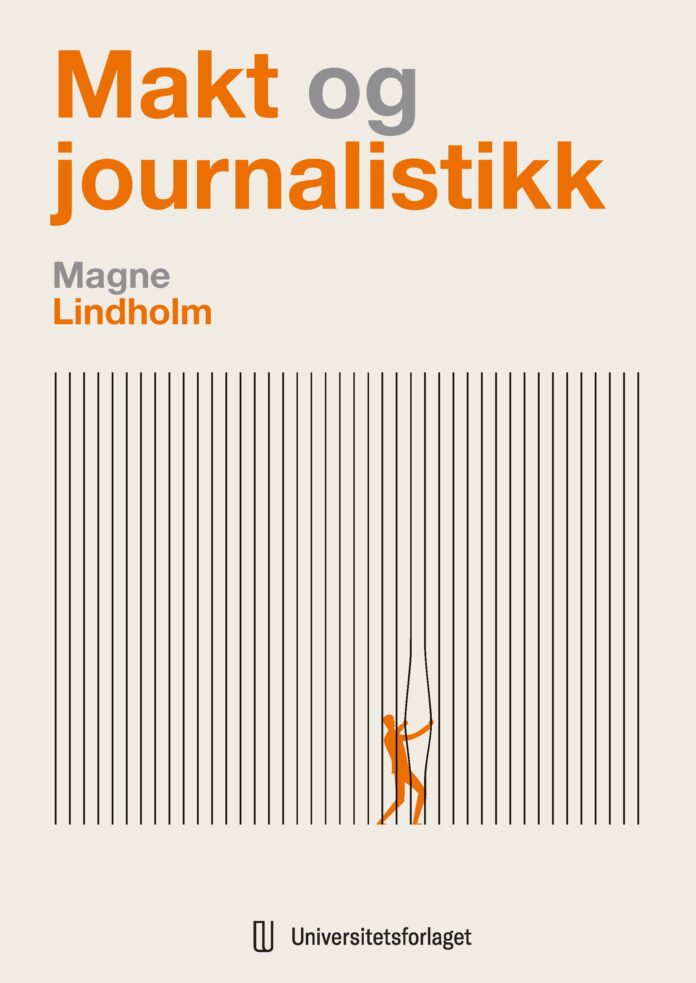(THIS ARTICLE IS MACHINE TRANSLATED by Google from Norwegian)
These words are power. This sentence is an exercise of power. To take the floor is to take part of the power and take part in the power. When we use words, we interfere. And when we use words in a medium, as for example in this writing called MODERN TIMES, we mix with a crowd and a public, which is larger and more versatile (and in itself perhaps more powerful) than if we only use verbal words in our circle of friends.
In Foucault's view, journalism can also be seen as an institution in society, which in particular exercises symbolic power.
Journalism's most central tool is language. In the form of words, if it is the written language in question. Ergo, journalism's primary tool is also a tool of power. It can give voice to some and remove voice from others. It can shift the focus. Select to and select from. It can angle and thus emphasize certain aspects and certain perspectives, while others are ignored or downplayed.
One of journalism's primary goals and in any case one of its most inexhaustible self-characteristics is to want to go after power at the seams, to act as a watchdog and always keep the responsible people in power under supervision. In that way, journalism is both a field that has power, that exercises power and that tries to investigate power and not least to be a guardian of power.
Thus, it is also completely appropriate and completely sensible that the Norwegian journalist and journalism researcher, Magne Lindholm, is now publishing the book about journalism and power.
Power over thought
And this is a well-constructed and perhaps even edifying book. In well over 200 easy-to-read pages, Lindholm dissects some significant aspects of the subject. He launches the book Power and Journalism with a series of defining sections, where he, albeit briefly, takes up journalism concepts and then examines the concept of power. He splits the latter into three.
We have power through strength, which mainly stems from Max Weber's work with the concept of power. This understanding is linked to power as an action, an actor, where a superior party via power can create a direction or a result, which an inferior party is opposed to.
Secondly, we have structural power, where, for example, all society's rules, laws, agreements, contracts etc., which in a practical way help to create order and prevent or at least reduce conflicts.
Finally, we have the symbolic power, which Lindholm presents as a power over thought – a power that helps to set limits on what is possible to think and thus shapes our possible conceptions of the world. Here Lindholm draws in particular on the French Michel Foucault, who in particular has studied how institutions such as prisons influence how we think and thus ultimately how we shape the world and our lives.
In Foucault's view, journalism can also be seen as an institution in society, which in particular exercises symbolic power, as it helps to shape our ability to imagine. At the same time, it also has a structural power in terms of the media structure, which also helps to regulate what journalism is and what journalism can and must do.

Widely around
After these initial investigations, the main part of the book follows a more analytical track, where Lindholm effectively gets around the media circuit. When it comes to symbolic power, Lindholm analyzes for example the news as a narrative and the journalist's self-perception.
The structural power is scrutinized especially from the point of view of recent, digital developments, which have shifted the structures and, for example, enabled a different openness, when it comes to having a voice in the debate – but at the same time also contains several opportunities for partly monitoring and partly marginalizing, violating or disregarding votes. It is also this development that has greatly reduced the power of journalism.
Journalism is also entertainment, performance, shared memory and more.
Finally, the Weberian power is analyzed in a number of specific cases, which deal with the journalist's dangerous work and the relationship between journalism and the police and the military respectively.
As you can probably sense, Lindholm gets around a lot. Perhaps also in places too far. I would have liked to have seen a slightly more exhaustive, analytical article and seen fewer cuts.
In his defining definition of journalism, Lindholm refers to the American journalism researcher Barbie Zelizer. She is among the strongest voices when it comes to opposition to a simplified view of journalism, which is rooted in the notion of journalism as the guardian of democracy. Journalism is much different and more than that, Zelizer believes. Lindholm draws on this broad definition of journalism, which emphasizes that journalism is also entertainment, performance, shared memory and more.
Still, Lindholm's stated view of power can be blamed for being a narrow-minded view of journalism. When Lindholm writes, he does so with the optics of power in mind, but journalism could also be richly and interestingly described with other optics. I think Lindholm is actually aware of this, and I would not blame the book for maintaining its unequivocal focus on power, but I would have liked Lindholm in his analyzes of power to also point out the downsides and weaknesses of this narrow focus. That would have created a stronger argument.
Nevertheless, this is a concise, precise, condensed and educational examination of an important aspect of journalism.


